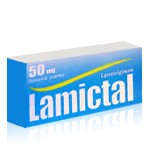Lennox-Gastaut Syndrome: Key Insights


Lennox-Gastaut Syndrome (LGS) is a rare and severe form of childhood-onset epilepsy that presents significant challenges in diagnosis, management, and long-term care. It is marked by a characteristic triad of multiple seizure types, specific EEG abnormalities, and cognitive or behavioral impairments. LGS typically begins between the ages of 3 and 5, though it can manifest earlier or later, and often persists into adulthood. Its complex nature requires a multidisciplinary approach to treatment and support.
What Is Lennox-Gastaut Syndrome?
Lennox-Gastaut Syndrome is a developmental and epileptic encephalopathy. This means it is not just a seizure disorder but also a condition that impacts cognitive development and function. LGS is known for its resistance to standard antiepileptic therapies, its association with developmental delay, and its diverse array of seizures. These seizures can be extremely disruptive, occur frequently, and carry a high risk of injury due to their sudden onset and often violent nature.
Children with LGS often experience tonic seizures (characterized by muscle stiffening, usually during sleep), atonic seizures (sudden loss of muscle tone that may lead to falls), and atypical absence seizures (brief lapses in awareness, often with fluttering eyelids or staring). The seizures are usually resistant to medication and are difficult to control, often requiring a combination of therapies.
The underlying cause of Lennox-Gastaut Syndrome varies. In some children, the syndrome develops following an earlier neurological insult, such as infantile spasms, brain malformations, infections like meningitis or encephalitis, or traumatic brain injury. In others, no specific cause can be identified, and it is labeled as cryptogenic or idiopathic LGS.
Life Expectancy in Lennox-Gastaut Syndrome
Life expectancy in individuals with Lennox-Gastaut Syndrome is significantly impacted by the severity and frequency of seizures, comorbidities, and the presence of other neurological complications. Although many people with LGS live into adulthood, their life expectancy may be reduced due to complications such as status epilepticus (prolonged seizures), accidental injuries during seizures, aspiration pneumonia, or sudden unexpected death in epilepsy (SUDEP).
Advances in seizure control, monitoring technologies, and supportive therapies have improved outcomes for many individuals, but mortality rates remain higher than in the general population. While there is no standard age of life expectancy that fits all individuals with LGS, studies suggest that the average life span may be shortened, particularly in cases where seizure control remains poor or when there are severe intellectual and motor impairments.
Despite these challenges, with comprehensive care that includes seizure management, physical and occupational therapy, and vigilant medical monitoring, many individuals with LGS can achieve improved quality of life and function within their capabilities.
Behavioral Issues in Lennox-Gastaut Syndrome
Behavioral and psychological disturbances are common in individuals with LGS and often pose as much of a challenge as the seizures themselves. These issues may arise due to the underlying brain dysfunction, frequent seizures, medication side effects, or frustration from communication difficulties and cognitive impairment.
Children and adults with LGS often experience problems such as hyperactivity, impulsivity, irritability, and aggression. Many display features consistent with autism spectrum disorder or attention-deficit hyperactivity disorder (ADHD). Mood instability is also frequently observed, with some individuals exhibiting episodes of anxiety or depression.
Cognitive decline is another hallmark feature of LGS. Most individuals show moderate to severe intellectual disability, and in many cases, the cognitive impairment worsens over time. This regression is not necessarily due to the seizures alone, but rather the overall epileptic encephalopathy — the brain’s altered functioning due to constant epileptic activity.
Speech and language development is often delayed or impaired. Some children may never develop the ability to speak fluently or effectively, further exacerbating behavioral frustrations. Physical coordination and motor skills may also be compromised, resulting in difficulty with walking, feeding, and self-care.
Behavioral problems can have a profound impact on daily life and may increase the burden on caregivers and families. These issues necessitate a coordinated treatment approach involving behavioral therapists, psychologists, speech therapists, and special education professionals.
The Triad of Lennox-Gastaut Syndrome
The diagnosis of LGS is largely clinical, supported by electroencephalography (EEG) and imaging studies. A hallmark of the syndrome is the classic Lennox-Gastaut triad:
- Multiple types of seizures – including tonic, atonic, and atypical absence seizures. These seizures are typically drug-resistant and may occur multiple times per day.
- Cognitive impairment or developmental delay – which often worsens over time. Even in cases where early development was normal, a noticeable decline in intellectual function usually accompanies the emergence of seizures.
- Characteristic EEG patterns – such as slow spike-and-wave discharges at less than 3 Hz and paroxysmal fast activity during sleep. These patterns help distinguish LGS from other epileptic syndromes and guide the diagnosis.
Although not every individual presents with all three components simultaneously, the presence of these features strongly supports the diagnosis. Additional imaging, such as MRI, may reveal structural brain abnormalities, and genetic testing is sometimes used to identify underlying causes.
The Role of Lamictal in the Treatment of Lennox-Gastaut Syndrome
Lamictal (lamotrigine) is an anticonvulsant medication commonly used in the management of seizures in Lennox-Gastaut Syndrome. It has become an important part of the treatment strategy for many individuals with LGS due to its favorable balance between efficacy and tolerability.
Lamotrigine works by stabilizing neuronal membranes and inhibiting the release of excitatory neurotransmitters such as glutamate. Unlike many other antiepileptic drugs, Lamictal is known for its broad-spectrum efficacy and relatively low sedative effect, which can be beneficial in a condition marked by already impaired cognitive function.
In clinical studies, Lamictal has shown effectiveness particularly in reducing tonic and atonic seizures, two of the most disabling types in LGS. Its use is often as an adjunct to other antiepileptic drugs, such as valproate, clobazam, or topiramate. Because of the need for gradual titration to reduce the risk of serious skin reactions (including Stevens-Johnson syndrome), Lamictal must be introduced slowly, often over several weeks.
One of the most valuable aspects of Lamictal is its cognitive profile. It is generally considered one of the “cognitively friendly” antiepileptic medications, meaning it is less likely to cause drowsiness, slowed thinking, or memory impairment. This is especially important for individuals with LGS, who are already dealing with cognitive delays.
Moreover, Lamictal may also play a role in stabilizing mood, which can be advantageous in managing behavioral disturbances. This dual benefit—seizure control and mood regulation—makes it a popular option in long-term management plans.
However, not every individual with LGS responds to Lamictal, and some may experience side effects, including dizziness, nausea, insomnia, or skin rashes. The decision to use Lamictal should always be based on a neurologist’s evaluation of seizure type, comorbidities, and individual response to previous treatments.
Conclusion
Lennox-Gastaut Syndrome represents one of the most challenging forms of epilepsy, with wide-ranging effects on physical health, cognitive function, behavior, and quality of life. Characterized by a triad of seizure types, developmental delays, and unique EEG findings, LGS demands a comprehensive and individualized approach to diagnosis and care.
The outlook for individuals with LGS can vary greatly. While some may achieve partial seizure control and functional improvement with the help of medications like Lamictal, others may struggle with persistent seizures and progressive disability. Nevertheless, ongoing research into new therapies, including cannabidiol (CBD), vagus nerve stimulation, and dietary interventions such as the ketogenic diet, offers hope for better outcomes.
Families and caregivers of those affected by LGS often face significant emotional, physical, and financial challenges. Access to specialized care, therapy services, and educational support is essential in managing this lifelong condition.
In the treatment landscape, Lamictal stands as a cornerstone for many, offering relief from the relentless burden of seizures and supporting cognitive and emotional stability. Its place in a comprehensive treatment plan reflects the need to tailor therapy to the individual — a core principle in managing Lennox-Gastaut Syndrome.
Medically Reviewed by Dr. Faride Ramos, MD
(Updated at Jun 13 / 2025)

